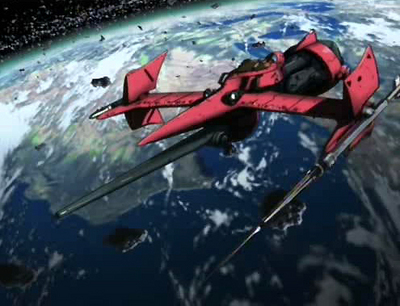overpuce said:
AgentNein said:
I agree on some points, but I have to add a few corrections, if I may.
Firstly, it's common misconception that "nothing can travel faster than light". This is theoretically not true. The reality is nothing can
accelerate to speeds faster than light. If something is already moving faster than light; or could be made to travel at those speeds without accelerating (theoretically possible); then that something can go at nearly any speed it wants. Therefore, faster-than-light travel
is possible.
Secondly, dark energy may not be energy at all. The name "dark energy" is simply a moniker applied to the perceived force that is causing the expansion of our universe; at an ever accelerating rate. Therefore, it is not fully understood. So "using" it, in any form including using it to travel at the speed of light is something you only see in science fiction. Also, dark energy and dark matter are not similar in any regard save for both being "mysterious".
Actually, scratch that. They are also similar in that they theoretically exist everywhere around us. Even in the space between you and your computer screen. So if one
did find a way to harness it, you wouldn't have to go anywhere to collect it.
Thirdly, as far as I'm aware the LHC has not yet created any artificial blackholes. Theoretically it
can but I do not believe they've actually detected any thus far.
You are correct that, in theory (that word comes up alot doesn't it?), blackholes can possibly bend space-time enough to form a bridge between two points in space. In essence, creating a "wormhole". There are a few problems with this, though. First, it's thus far not full understood exactly how blackholes function. Second, to generate a blackhole you'd need an immense amount of mass in one location; compressed to near infinite density. (something a particle accelerator won't really help with) Thirdly, even if you managed to create one and even if it proved to be a Einstein-Rosen Bridge, the tidal forces you'd face simply traversing the thing would tear you apart.
Now, you're final point is one I agree with. A "generational" space craft is, so far, the best option we have for interstellar travel. In fact, it's the
only option that's seemingly viable for the foreseeable future.
It's not without it's issues though. But propulsion isn't one of them. As you said, an ion drive is one option. Solar sails are another; for part of the journey anyway. Another is a matter/anti-matter drive. That latter of which would provide FAR greater thrust but is problematic because, even after decades of making the stuff, we've only a few grams of anti-matter stored worldwide. (if that)
The real issue is power. No matter how efficient you make your crafts systems, energy loss
will occur. As such, over the incredible lengths of time it will take to travel between the stars, your craft will inevitably run out.
Now in-system, as in within range of a solar mass, you could use an array of solar panels to supplement your power supply. But the majority of your journey would be out-of-range, so the panels would be useless mass during most of it. (which would make it more difficult to accelerate to speed, making one wonder if they're even needed)
So again, the problem is power. It's the biggest hurdle we face in the prospect of interstellar travel.
Well....that and cost/resources. The time, money, and resource requirements you'd need to build such a massive craft would be incredibly immense.
bz316 said:
The only concept that's been confirmed as a mathematical possibility and not in violation of special relativity is the Alcubierre Drive concept, in which exotic matter particles (negative mass, negative energy) are used to warp space around an object. Hence, FTL distance and travel time while not actually having velocity greater than c (3.0*10^8 m/s).
This is the essence of the theoretical "warp drive". A concept that existed before Star Trek; and one I think, if real, offers the best chance for interstellar travel.
Though, it relies quite heavily on near pure imaginary particles actually existing. So...
But then again, exotic matter is also theorized as a means to keep macro-wormholes stable. So I suppose either method of travel is as "feasible" as the other. In a way.

